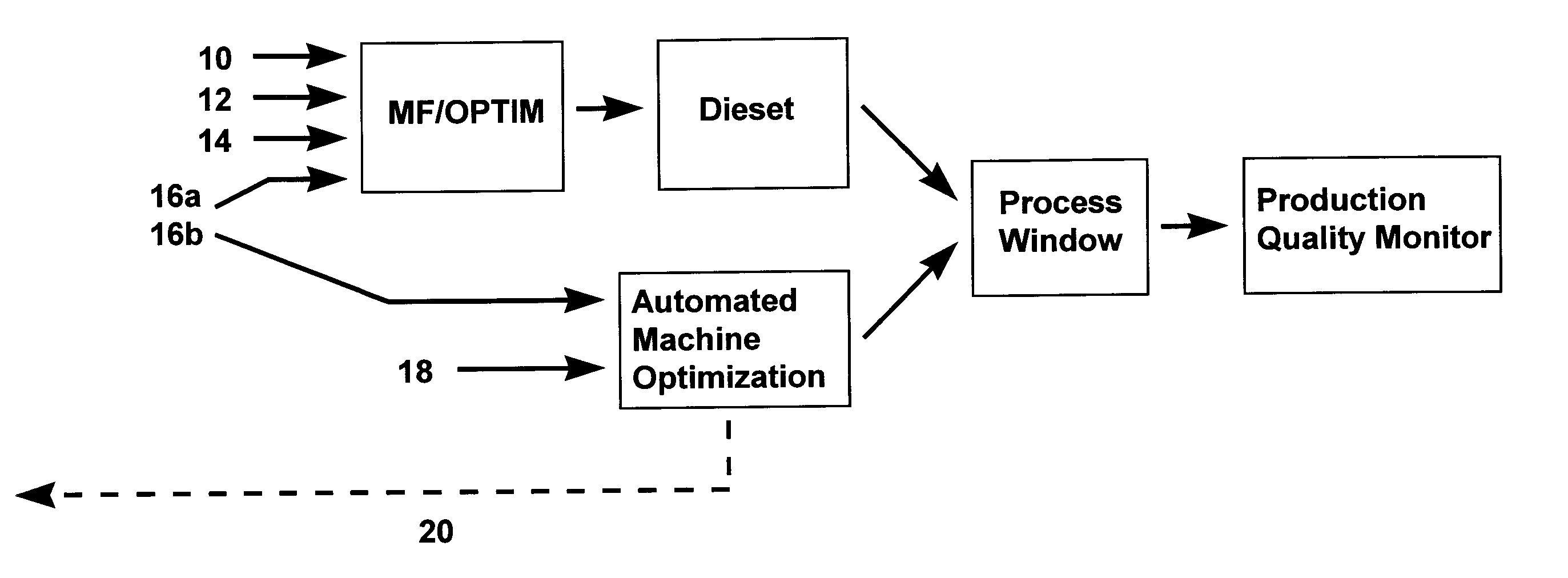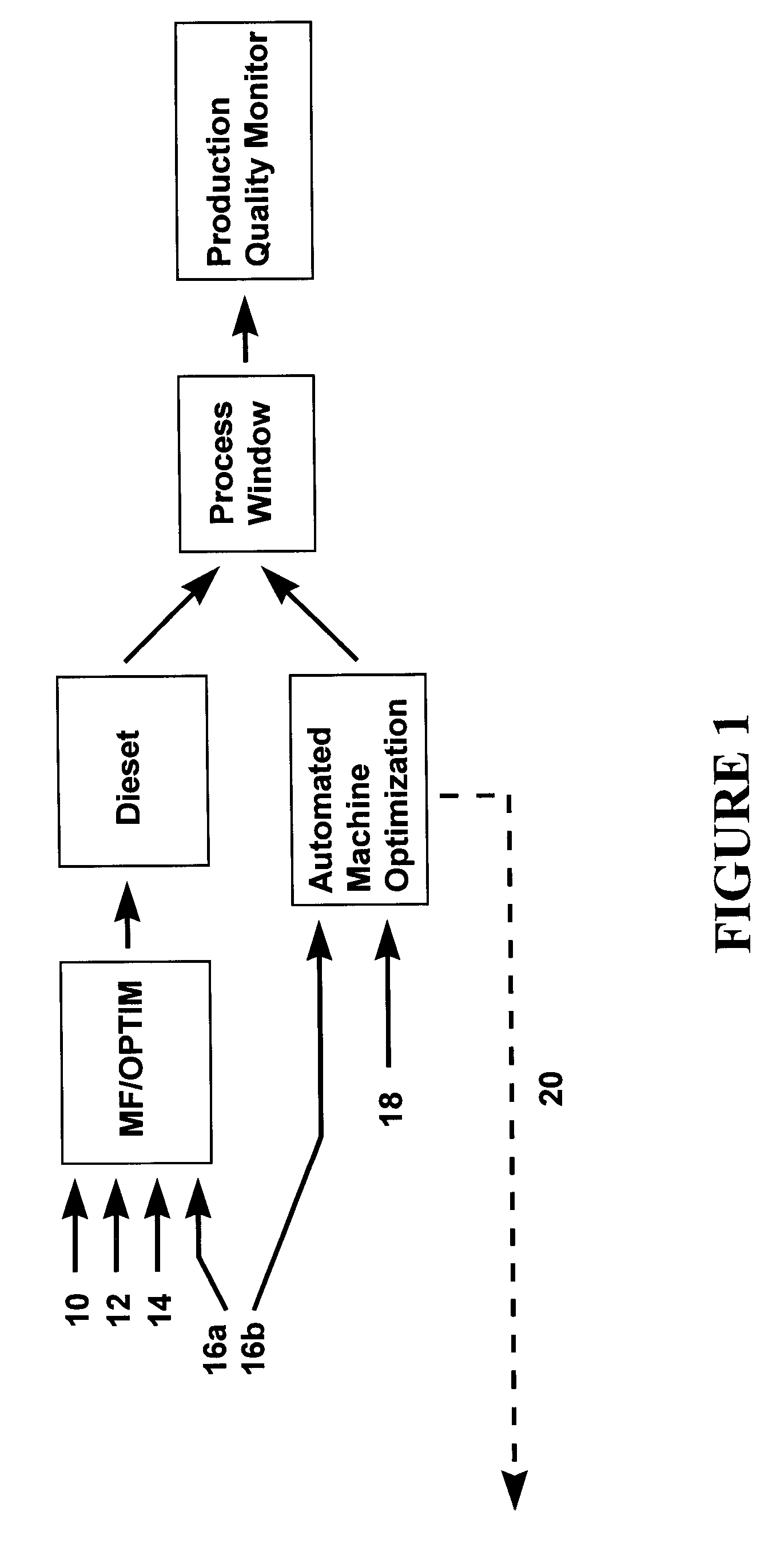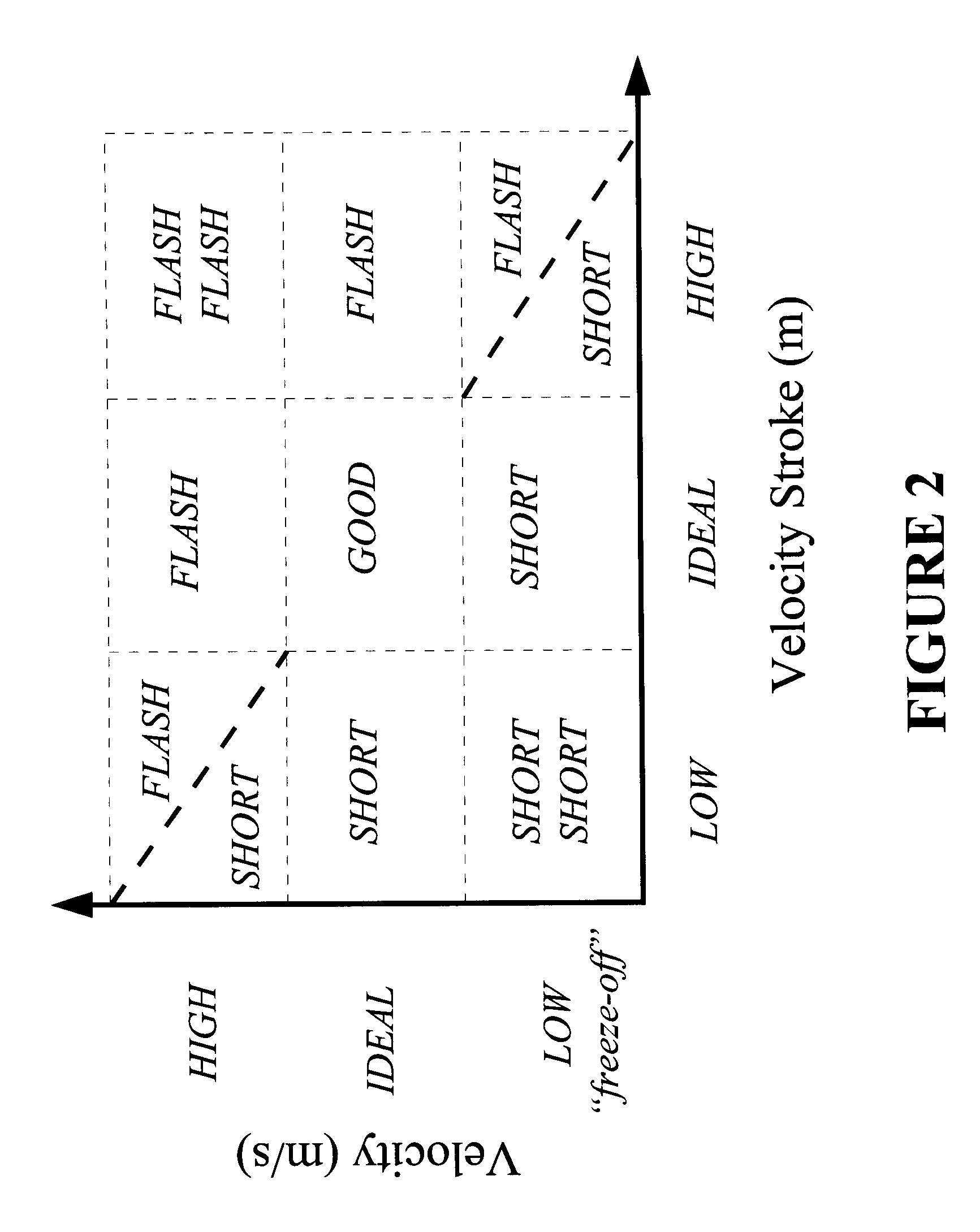Automated Molding Technology For Thermoplastic Injection Molding
a technology of injection molding and automatic molding, which is applied in the direction of auxillary shaping apparatus, manufacturing tools, ceramic shaping apparatus, etc., can solve the problems of increasing complexity of injection molding process, increasing cost, and increasing processing difficulty of engineering materials
- Summary
- Abstract
- Description
- Claims
- Application Information
AI Technical Summary
Benefits of technology
Problems solved by technology
Method used
Image
Examples
Embodiment Construction
[0075] An Automated Molding Optimization (or AMO) method according to a preferred embodiment of the present invention is used in setting up the injection / filling velocity and packing / holding pressure profiles. Other injection molding machine parameters, including barrel temperatures, mold temperatures, cooling time and screw rotational velocity are presently the responsibility of the die setter.
[0076] The approach of AMO's velocity optimization is to profile regarding an inferred mold geometry, derived from the pressure differential. Pressure phase optimization is used to profile regarding an inferred polymer solidification, derived for a precise measurement of screw displacement. AMO determines machine and material characteristics in-line from the machine without the need for user interaction, resulting in optimized profiles that are ‘in-phase’ with the machine dynamics, material and mold geometry.
[0077]FIG. 1 is a flow chart summarizing the role of the AMO method according to a ...
PUM
| Property | Measurement | Unit |
|---|---|---|
| Fraction | aaaaa | aaaaa |
| Fraction | aaaaa | aaaaa |
| Fraction | aaaaa | aaaaa |
Abstract
Description
Claims
Application Information
 Login to View More
Login to View More - R&D
- Intellectual Property
- Life Sciences
- Materials
- Tech Scout
- Unparalleled Data Quality
- Higher Quality Content
- 60% Fewer Hallucinations
Browse by: Latest US Patents, China's latest patents, Technical Efficacy Thesaurus, Application Domain, Technology Topic, Popular Technical Reports.
© 2025 PatSnap. All rights reserved.Legal|Privacy policy|Modern Slavery Act Transparency Statement|Sitemap|About US| Contact US: help@patsnap.com



